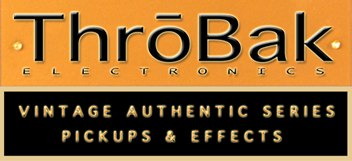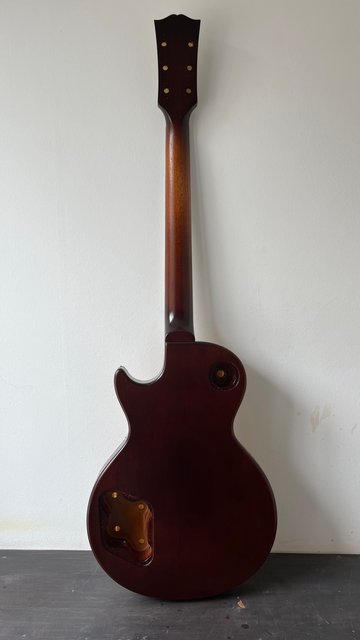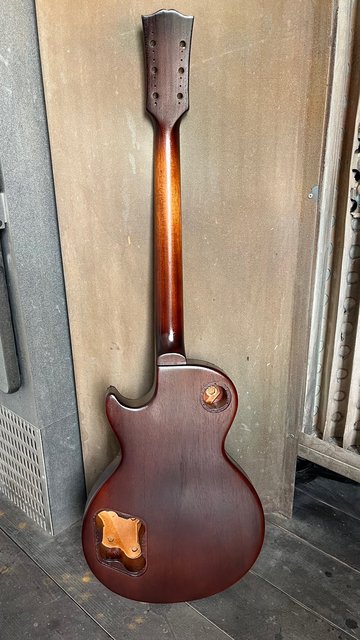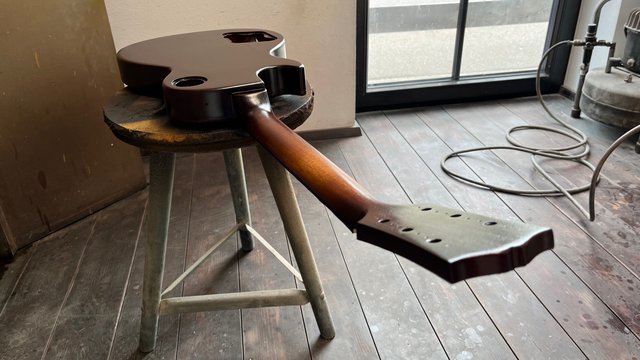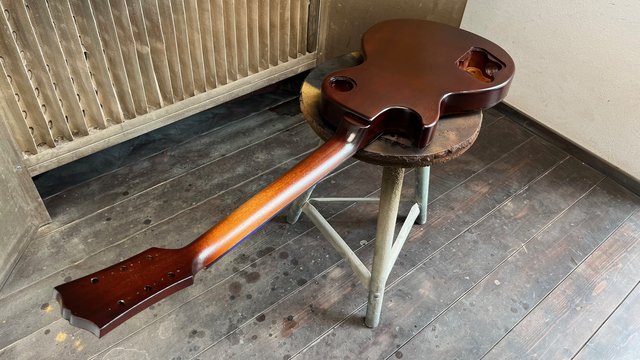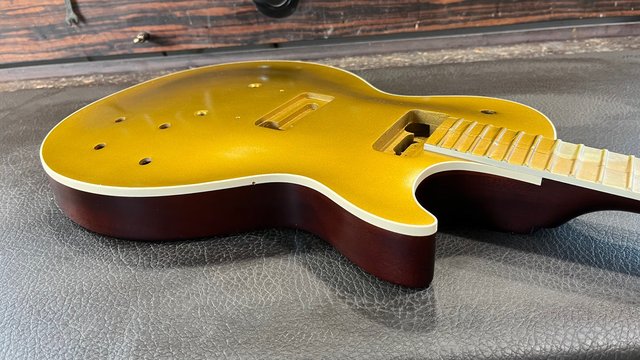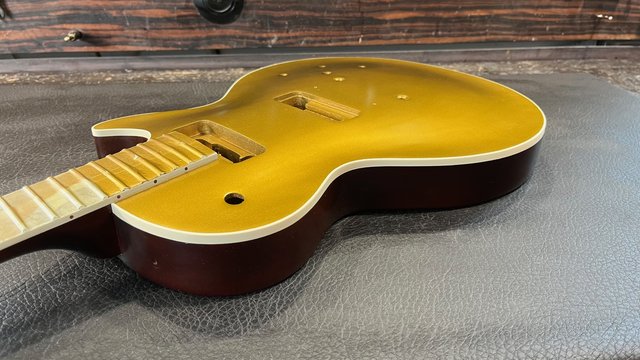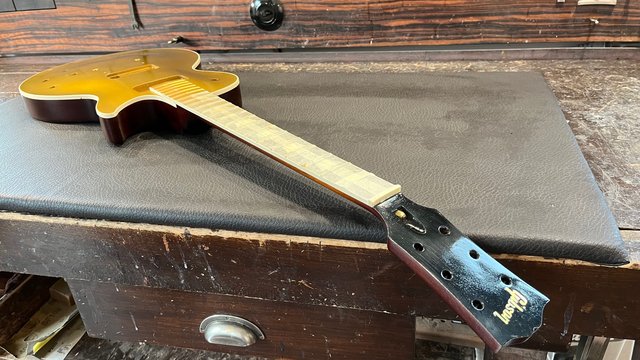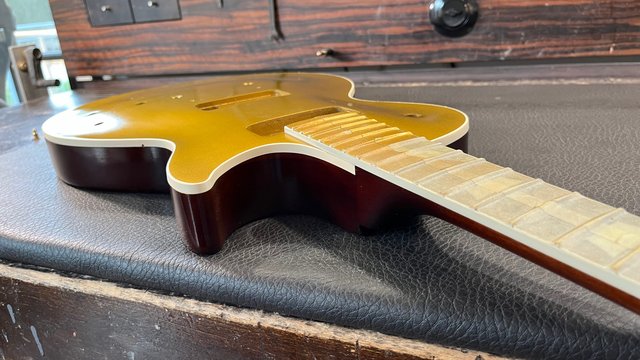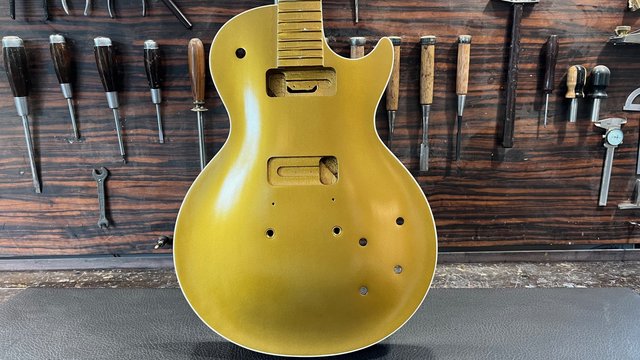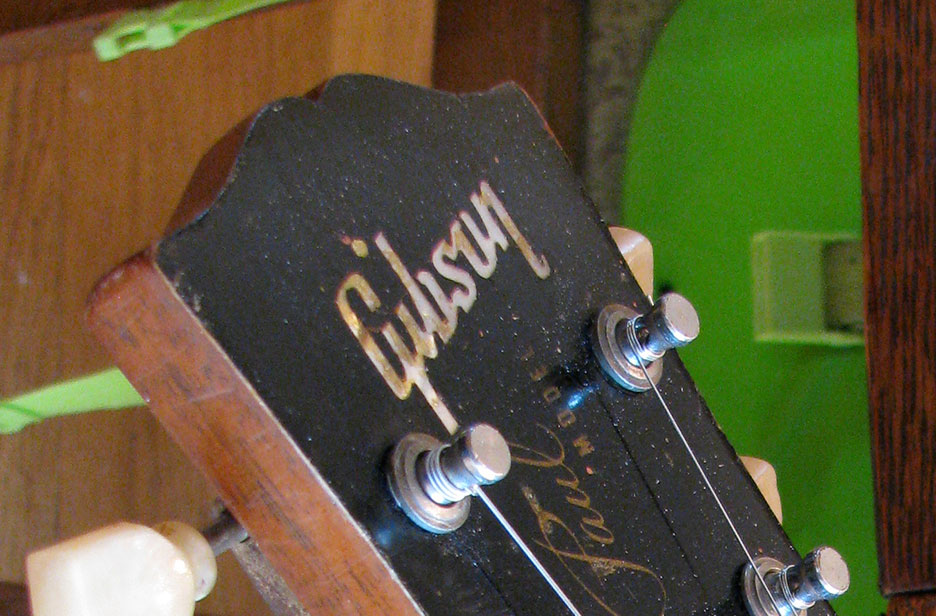Lots of good information this morning as Florian starts on the Dark Back.
" Here I'm applying the dark brown oil based aniline dye grain filler. That's what they had back in the day. Aniline is the basis of the earliest synthetic dyes. It's hand mixed by me (I guess my formula resembles what Gibson used in the Fifties). It smells very natural and has linseed-oil in there too.
It's actually relatively close to what classical guitar builders still use to fill the pores of rosewood or mahogany, even if it's not completely the same.
It's concentrated in the deep pores of the mahogany and appears black in the pore, which leads to that old-fashioned look and beautiful appearance. I wipe it on with a brush and a cloth and wipe it off with a rag.
It's a special technique, you need to be a little experienced.
At the same time the light brown mahogany gets stained and the pores get filled. So you save lacquer and enable a super thin coating with the nitro cellulose later on.
The sources, books, the web and colleagues I asked are not 100 % sure how the dark backs were made. I've had the opportunity to touch-up, restore and even strip one and found out that the clear coats were tinted as well. This leads me to the conclusion that they filled the pores and stained the mahogany at the same time and probably painted over with a brown-tinted lacquer as well (if ordered from dealers for example).
The dark back could have resulted from the oil based filler which literally melts into the clear or the tinted clear coat. As well - if you strip or sand an original you have brown-ish dust on your sandpaper. "
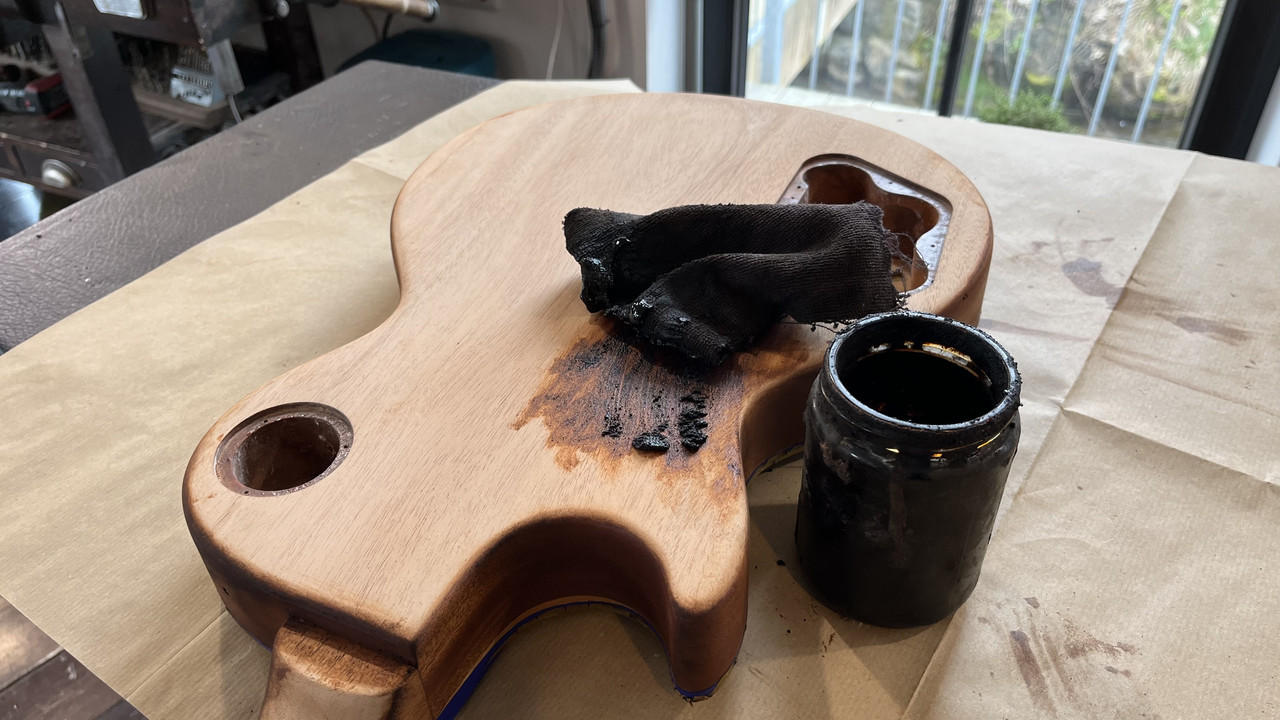
" Here I'm applying the dark brown oil based aniline dye grain filler. That's what they had back in the day. Aniline is the basis of the earliest synthetic dyes. It's hand mixed by me (I guess my formula resembles what Gibson used in the Fifties). It smells very natural and has linseed-oil in there too.
It's actually relatively close to what classical guitar builders still use to fill the pores of rosewood or mahogany, even if it's not completely the same.
It's concentrated in the deep pores of the mahogany and appears black in the pore, which leads to that old-fashioned look and beautiful appearance. I wipe it on with a brush and a cloth and wipe it off with a rag.
It's a special technique, you need to be a little experienced.
At the same time the light brown mahogany gets stained and the pores get filled. So you save lacquer and enable a super thin coating with the nitro cellulose later on.
The sources, books, the web and colleagues I asked are not 100 % sure how the dark backs were made. I've had the opportunity to touch-up, restore and even strip one and found out that the clear coats were tinted as well. This leads me to the conclusion that they filled the pores and stained the mahogany at the same time and probably painted over with a brown-tinted lacquer as well (if ordered from dealers for example).
The dark back could have resulted from the oil based filler which literally melts into the clear or the tinted clear coat. As well - if you strip or sand an original you have brown-ish dust on your sandpaper. "

Last edited:


